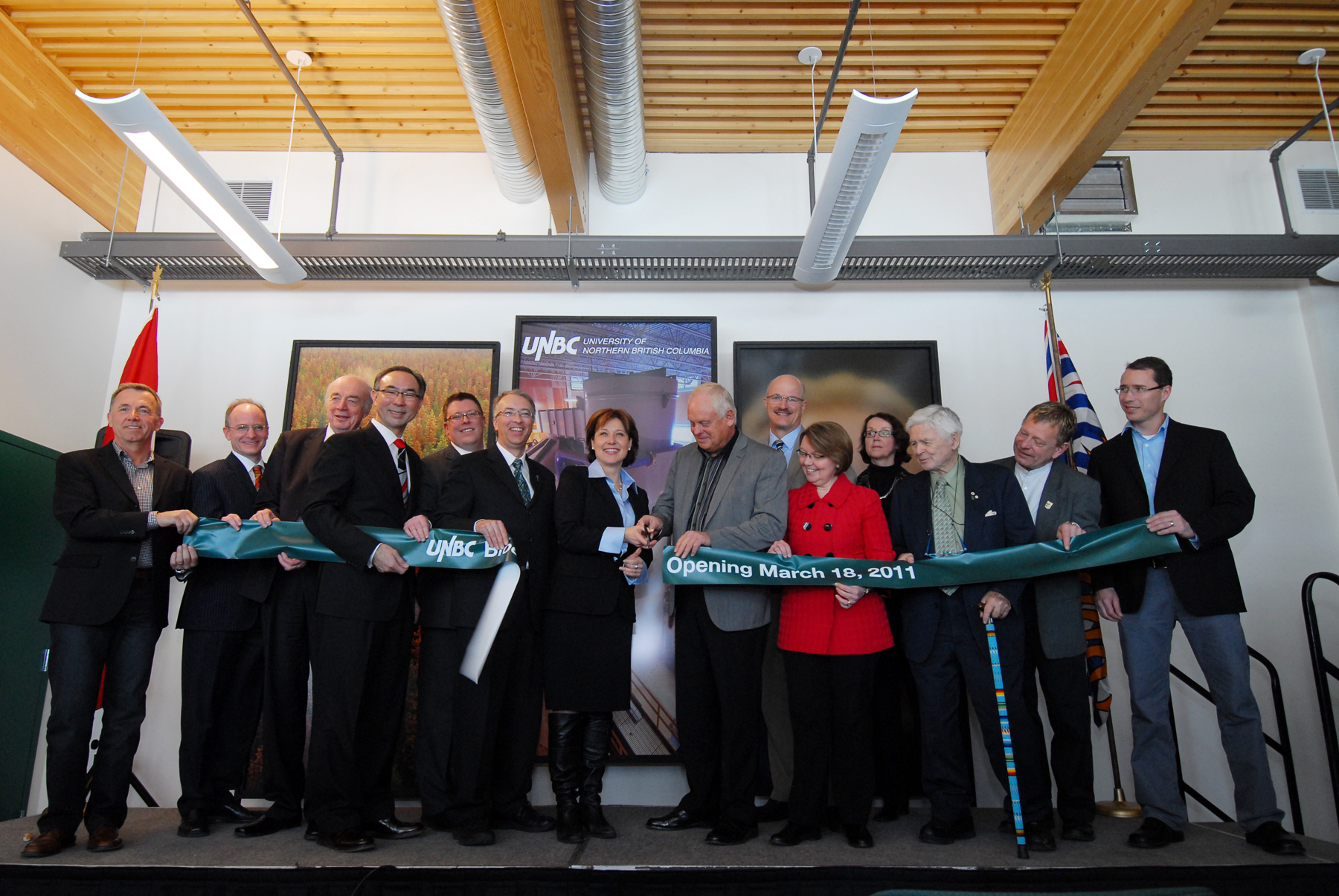Premier Christy Clark Opens new Bioenergy Plant At UNBC
By 250 News
Friday, March 18, 2011 01:15 PM

Premier Christy Clark is front and centre at ribbon cutting ceremony at UNBC (photo courtesy UNBC)
Prince George, B.C.- Premier Christy Clark has officially opened the new Bioenergy plant at UNBC. The visit by Clark was her first outside of the lower mainland since being sworn in as B.C.'s Premier.
UNBC is the first university in Canada to use bioenergy from waste wood products to heat campus buildings.
The plant, which uses innovative technology to convert bark, branches, sawdust and leftover wood products from nearby mills into a highly efficient means of heating campus buildings, is expected to reduce greenhouse gas emissions at the university by 3,500-4,000 tonnes annually. That is the equivalent of taking 1,000 cars off the road every year.
The heating plant is a component of the university's bioenergy program plan to help meet its current and future energy needs, as well as contributing to research and development, training, education and the development of bioenergy projects and demonstration opportunities for northern communities.
UNBC received $15.7 million from the federal and provincial governments for its biomass gasification system, and $5 million from both governments for upgrades to campus heating equipment.
This project is part of the federal government's two-year, $2-billion plan to repair and expand research and educational facilities at Canadian post-secondary institutions. It was among 39 projects at post-secondary institutions across the province to receive funding from the Knowledge Infrastructure Program.
Previous Story - Next Story
Return to Home








